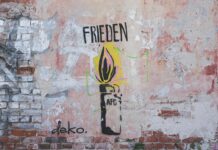Our community has decided that the street lighting on light-emitting diodes. Of course it is about energy saving. Some residents have protested, because the new, much brighter light. Other concerns were expressed.
Yet in print, in us sodium high lamps in use. The yellow gave off light sauce, reminiscent of old gas lanterns. The glass lampshade was always dirty, because including the moths to Die gathered. You’re now aware on the subject of insects, and so I assumed that the white LED light would still be calling for more victims among the moths. But nada, niente, nothing. The glass was perfectly clean. There could be two explanations. Firstly, the spectrum of the new lighting attracts a lot fewer insects. Secondly, the number of Which is now gone in such a way that it hardly even comes to night-time collisions.
Actually, you should not have been in this hot summer, many fireflies expect. This was not in my garden ever the case, no one was looking. Representative this is, but Italian entomologists have made in Turin a similar observation. They were Clues from the population in the Firefly Luciola italica, after the Occurrence and found out that he went to them all the more rare in the case, the more intense the environment was lit up. The physicist Christopher Kyba, of the German research centre for Geosciences in Potsdam, has put together a list of the numerous similar examples.
the birds start to sing in the city earlier in the day, and to breed earlier in the year, because they are constantly surrounded by artificial light sources. Migratory birds, travelling by night from the path. Mice to put on weight and are prone to inflammation, more if it is around you are never really dark.
The science of life in the dark is still at the beginning
night-active ants go out on their raids easier is misleading. Sea turtles are not distracted by the street lighting in the country so strong that you can find to lay their eggs at the right beach. And so on, you could sit still for a long time.
the subject of the Scotobiologie, the science of life in the dark is still in its infancy. The question, for example, which type of LED for insects is the least attractive, not with a definitive answer. The zoologist Gerhard Eisenbeis of the University of Mainz has examined on behalf of the city of Düsseldorf, ten years ago, different light sources. The most harmful were mercury-vapor lamps, which radiate by the way, a high proportion of UV light. Compared to cut metal lamps from halogen to 16 percent better, fluorescent tubes 46 per cent, of sodium vapour lamps by 54 percent, and light-emitting diodes by 80 percent.




